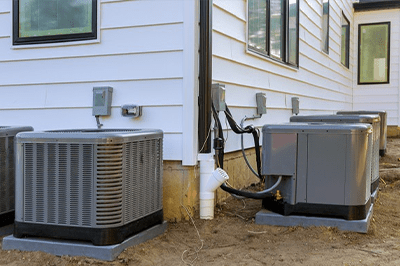
Coronavirus Update: We care about your health and continue to service our customers safely. Read More
Mini Splits are heating and cooling systems that allow you to regulate the temperature in specific rooms or areas. An outside compressor/condenser and inside air-handling unit(s) are the two primary components of a mini-split system. When it comes to adding cooling or heating to individual areas of a home, the ductless mini split is an effective and adaptable solution. Wall, floor, or ceiling-mounted units are connected to an exterior compressor in ductless mini-split air conditioners and heaters, often known as a ductless mini split system.
Choosing a ductless mini split over window air conditioners and space heaters is a smart move if you want to chill or heat particular rooms with more efficiency and less clutter. Even rooms that are not being used might be warmed or cooled by central HVAC systems because the air is pushed throughout the house. “How efficient is it if you turn on the kitchen faucet and all the other faucets in the home turn on at once?” In the words of Mitsubishi Electric’s senior marketing manager, “that’s what central systems do”!
Ductless mini split can also be used in rooms that are not connected to the rest of the house’s heating system.
When buying expensive and comforting devices, it is very important to consider few things while choosing them. So, here are few factors that will guide you to choose a ductless mini split air conditioner.
1. Energy Star Rating:
You should look for an ENERGY STAR Certification while choosing a ductless mini split air conditioner. In order to qualify as Energy Star ductless HVAC systems, they must meet strict standards imposed by the Environmental Protection Agency (EPA) and US Department of Energy.
2. EER and SEER:
Make sure the Energy Efficiency Rating (EER) and Seasonal Energy Efficiency Rating (SEER) are high. It may be more expensive to install a ductless AC system with a higher rating, but will pay for itself in the long run, as it will cost less to operate.
3. BTUs:
As you shop for units, you’ll notice references to BTUs. A BTU is a British Thermal Unit. You need more BTUs to keep a large room cool.
Calculate the amount of BTUs you need based on the square footage of each room using an online calculator or chart. A 150-square-foot room, for example, requires up to 5000 BTUs. An area measuring 500 square feet needs 10,000 BTUs, while a 1,960-square-foot area requires 28,500 BTUs.
